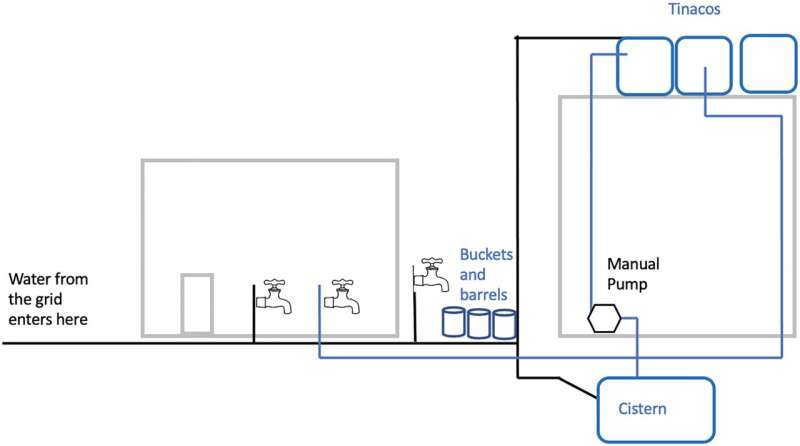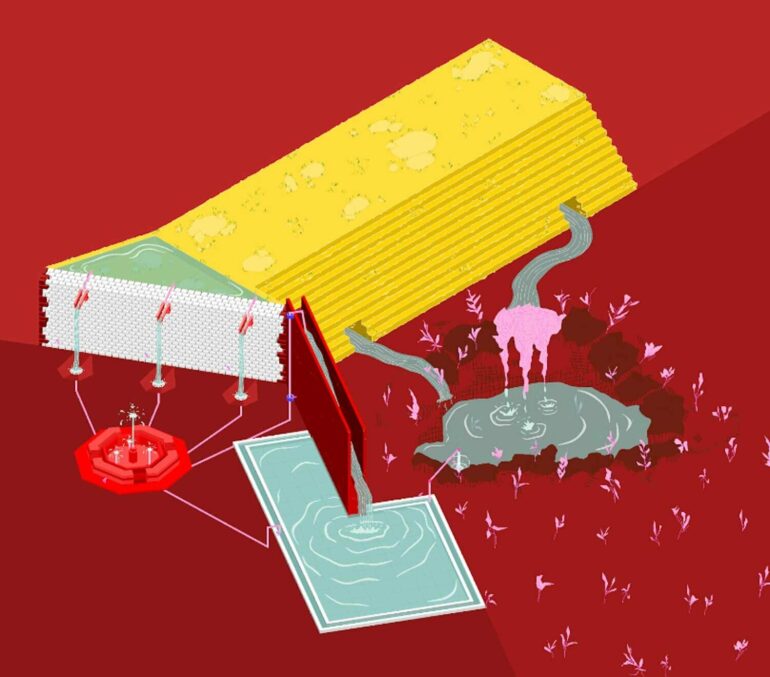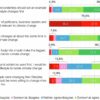As climate change and population growth make water scarcity increasingly common, a much larger share of the global population will be forced to reckon with the costs of urban water scarcity.
A new study published in PLOS Water sheds light on how households bear the monetary and nonmonetary costs when water supply is intermittent, rather than continuous—with policy implications that could help make urban water safer, more sustainable and more equitable.
A billion people globally, including about two-thirds of the population of Latin America, live with intermittent water supply systems that limit the distribution of water to a few hours a day or a few days a week to subsectors of the population—either by rationing areas of the water grid or by failing to maintain uniform pressure.
Intermittent water supply damages the water grid infrastructure, and is associated with deterioration in water quality and diarrheal disease. But while most existing literature recommends cities move away from intermittent supply, transitioning to continuous supply may be unrealistic, the study’s authors said.
“There was a need for research documenting how households bear the cost and adapt, and there’s a need for policy advice for how to ensure safe and equitable urban water access within a system that can’t offer continuous water supply,” said study co-author Liz Roberts, professor of anthropology and faculty associate at the Research Center for Group Dynamics at the University of Michigan’s Institute for Social Research (ISR).
Roberts is the principal investigator of the team behind “Neighborhood Environments as Socio-Techno-Bio Systems: Water Quality, Public Trust and Health in Mexico City (NESTSMX),” a collaborative project that brings together expertise from U-M and the Instituto Nacional de Salud Pública in Mexico City. NESTSMX developed methods for understanding neighborhoods as “socio-techno-bio systems” and how these systems relate to people’s trust in (or distrust of) their water.
First author Alyssa Huberts of Harvard University designed and carried out the large survey, while NESTSMX gathered data from 59 households that were part of U-M’s “Early Life Exposures in Mexico to Environmental Toxins” 25-year birth cohort study.
To find out how households cope with limited water supply, the researchers combined results from open-ended household interviews, ethnographic observations about household water infrastructure and water management, and analysis of a large survey from Mexico City, home to some 9 million residents whose water demand regularly surpasses supply.
Surprisingly, households in the study did not report many complaints about the quantity of water they received, even when their household received water only a few days a week, the researchers said.
“The ethnographic visits to NESTSMX households revealed that residents’ reports of having ‘enough’ water, even when they experienced intermittency and cutoffs, relied on labor, intensive water storage and management practices,” said co-author Faith Cole, a U-M alumna and doctoral student in anthropology at UCLA. “The burdens of managing limited water supply to make it sufficient for daily needs must be considered in efforts to improve equity in water access.”

An example of the complex household storage infrastructure which residents commonly construct themselves. NESTSMX household 514. © PLOS Water (2023). DOI: 10.1371/journal.pwat.0000056
The NESTSMX field team encountered residents, mostly from working-class neighborhoods in Mexico City, who managed elaborate systems of household storage to buffer themselves from the impacts of intermittent supply. Household members, especially women, deploy coping practices like storing water, buying alternative water sources, and reusing and conserving water.
U-M anthropology doctoral student Paloma Contreras, an ISR Next Generation Scholar, spent three months after the end of NESTSMX collecting data from women living in two working-class neighborhoods, with the goal of comparing the psychological and biological effects of living in neighborhoods with high and low levels of water insecurity.
“During my fieldwork visit, local purifiers across the city agreed to increase their prices at the same time, making water twice as expensive from one week to another,” she said. “This rapid, unexpected price change impacted people that are already impoverished in their budget but also in the ways they allocate clean water sources.”
The financial, labor and water quality impacts of adaptation are primarily borne by marginalized households, the researchers said. Households in the study that faced the most extreme water scarcity were those off of the water grid, relying on neighbors to share their public supply or on water deliveries from pipas, 10,000-liter tanker trucks that deliver water to fill neighborhood or household storage containers.
“The households that we interviewed were endlessly creative and resourceful in addressing their water’s deficiencies—because they had to be,” Huberts said. “Poor and marginalized households disproportionately are the ones forced to find those solutions, exacerbating the inequalities that already existed in the distribution of piped water.”
Household storage and management in Mexico City also makes their water quality noticeably less safe to drink, the researchers said. For consumption, residents were forced to boil, treat or purchase water—or frequently opted for soda instead.
“By understanding how households cope with an intermittent water supply, we can learn how to make urban water more accessible, safe and sustainable,” Roberts said. “This work helps us to do that with consideration of the realities of scarce water supply.”
Study co-authors also include David Palma and Ana Bernal Garcia of the Instituto Nacional de Salud Pública in Mexico City.
Policy recommendations
In light of the findings, the authors provide a set of policy suggestions to address the deterioration of water quality during household storage and the inequalities of intermittency:
Governments should consider making household costs less onerous and address some of the inequities in current patterns of water management and distribution.Governments researching water supply, security and health must consider the coping and storage methods by which households adapt to their water supply to understand inequities in water access and the potential health risks of “making scarcity enough.” Self-reported measures of water insecurity may mask significant variations in water access. Similarly, measures that report water quality at the point of supply might mask inequalities in health risks if certain households are forced to store water for more prolonged periods.Policymakers could do more to provision households with enough water beyond the physical grid. This could include subsidizing households’ efforts to make their intermittent water mimic the experience of continuous supply by providing storage tanks, automatic pumps or other household infrastructure.To ensure safe drinking water quality, governments should subsidize water treatment at the point of consumption. In intermittent water supply systems, where most households store their water before domestic use, government resources spent making water potable when it arrives to the household are undermined by the need for storage.
More information:
Alyssa Huberts et al, Making scarcity “enough”: The hidden household costs of adapting to water scarcity in Mexico City, PLOS Water (2023). DOI: 10.1371/journal.pwat.0000056
Provided by
University of Michigan
Citation:
How households adapt to water scarcity: New study (2023, March 9)



